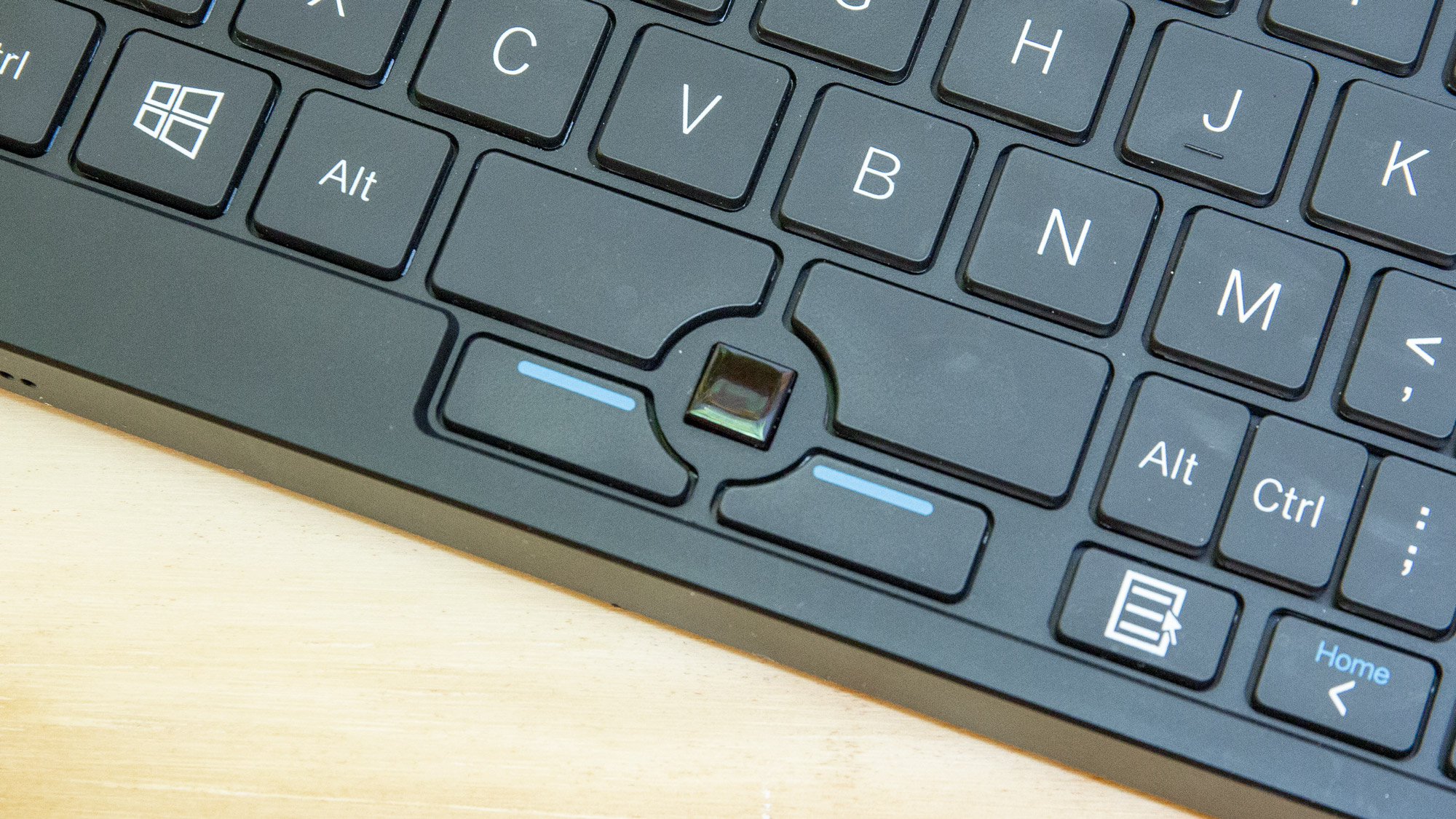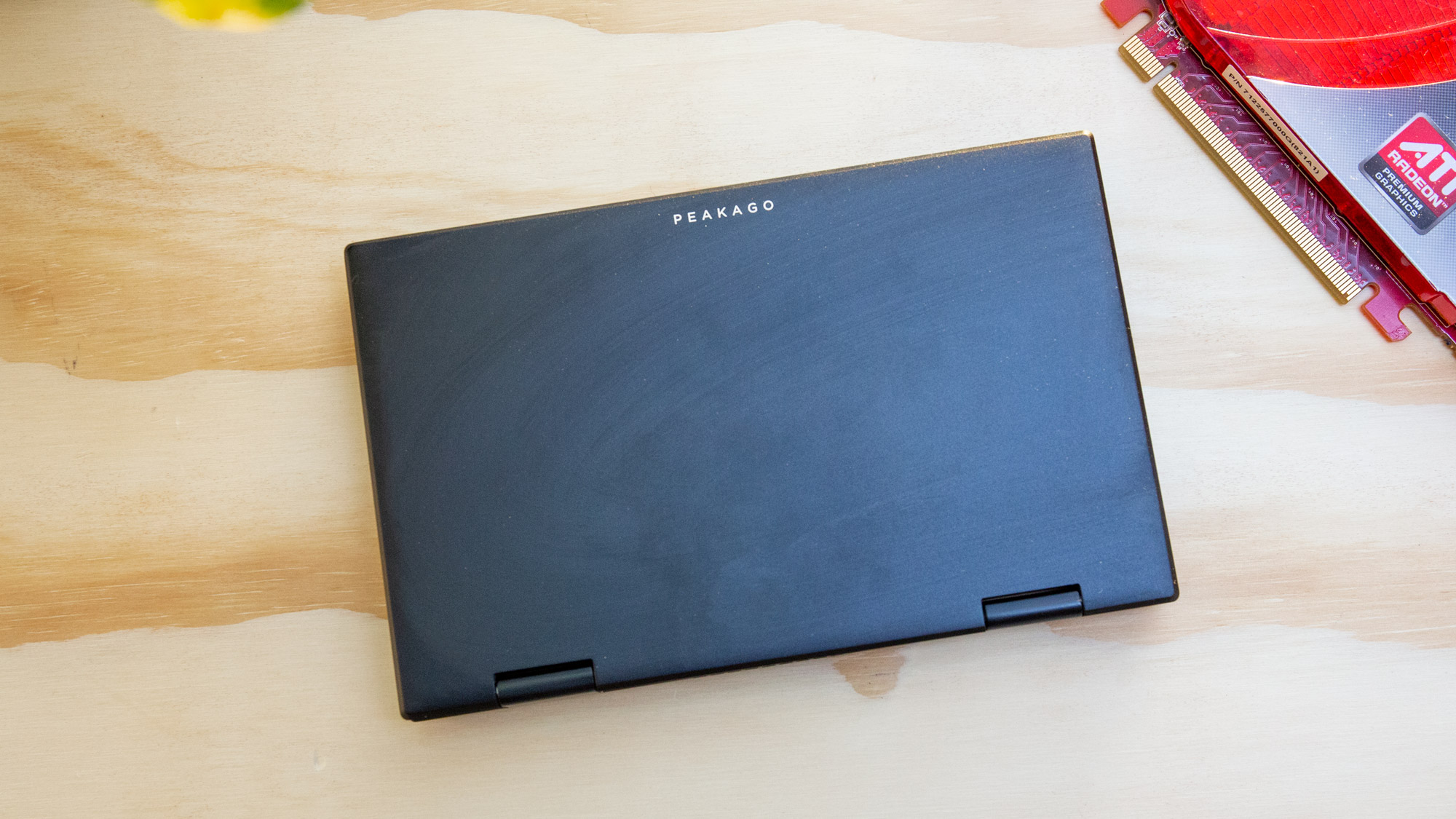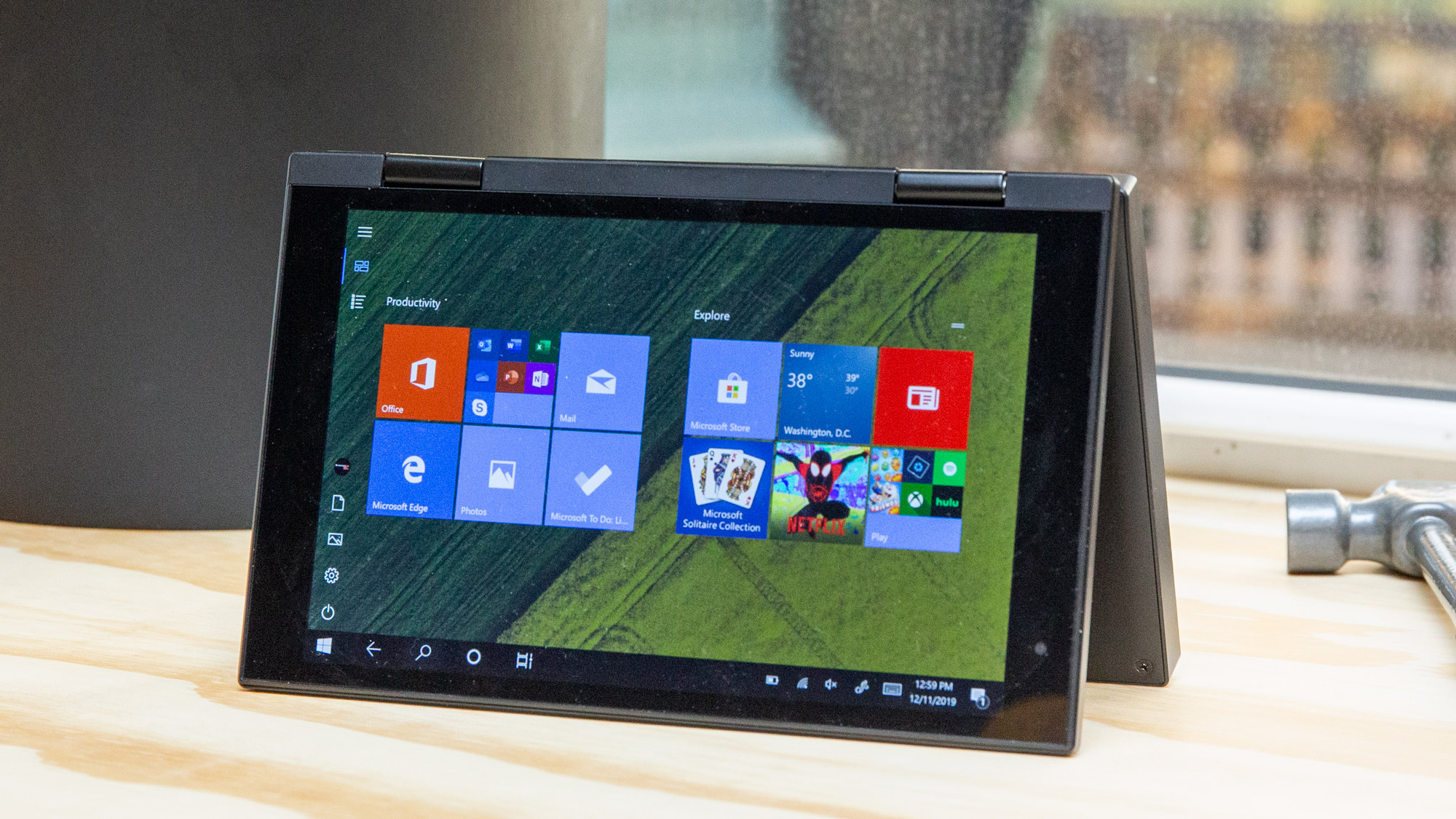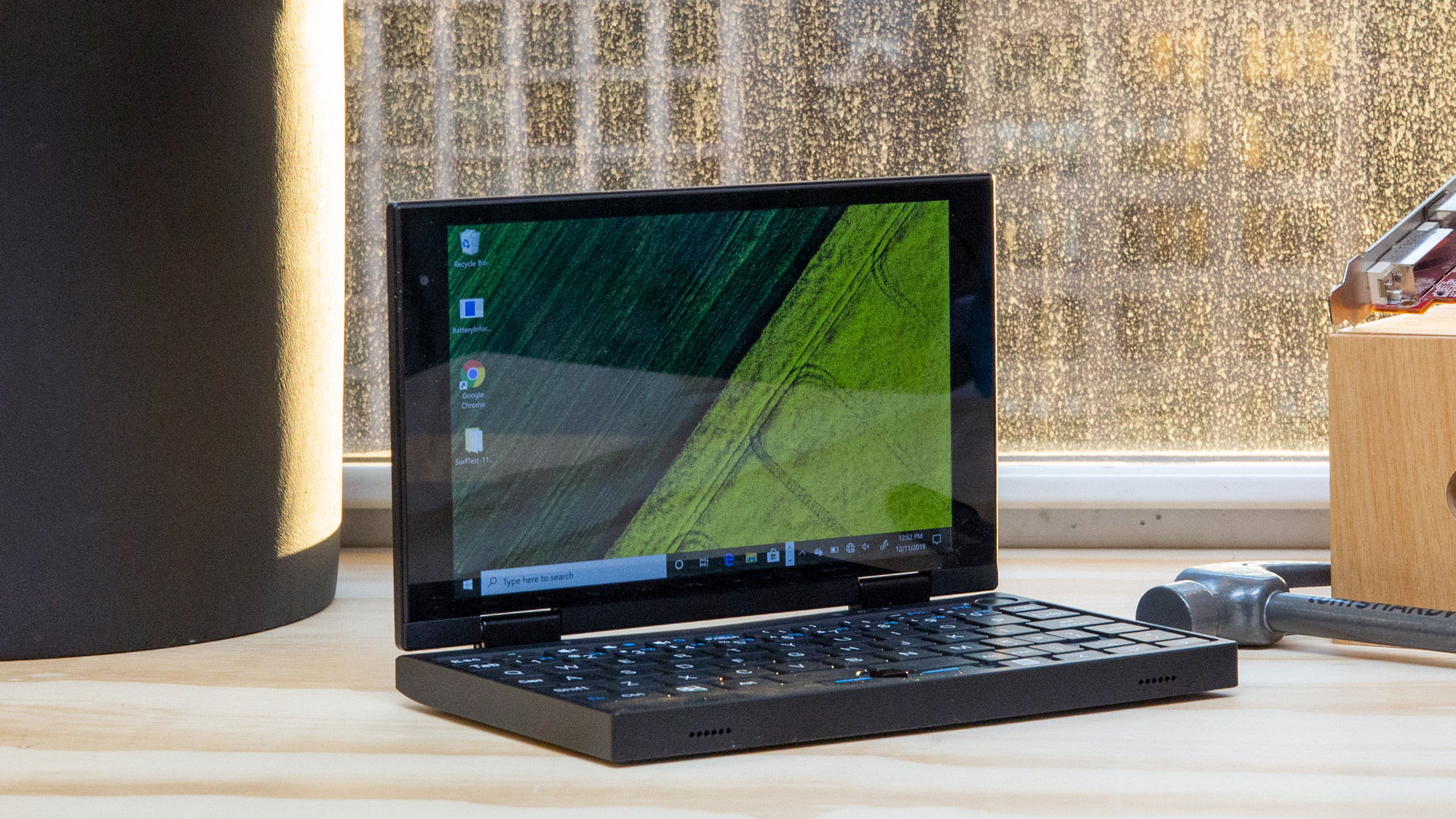
People take their laptops everywhere, but they can be bulky. But what if it fit in your pocket? The Peakago laptop is much easier to travel with because it's an incredibly lightweight 7-inch convertible. Unfortunately, it also seems to be a solution few asked for in search of a problem no one knew they had: how do we make a tiny Windows tablet into a laptop?
There were several compromises made to accommodate the Peakago’s size that undermine its overall usefulness. A laptop in this day and age shouldn’t ship with a chip released in 2016, especially when Intel Y-series chips are currently available that fit the low power requirements and offer better performance. The Peakago’s keyboard and Lenovo Thinkpad-esque mouse nub get the job done but are cramped and uncomfortable to use for long periods of time. As such, the Peakago functions much better as a tablet, unless it is hooked up to an external display and used with a standard keyboard and mouse (for recommendation, see our Best Gaming Mouse article). Unfortunately, the Peakago also lacks in the I/O department, so if you want a better experience using it as a PC, you’re going to need to break out your dongles.
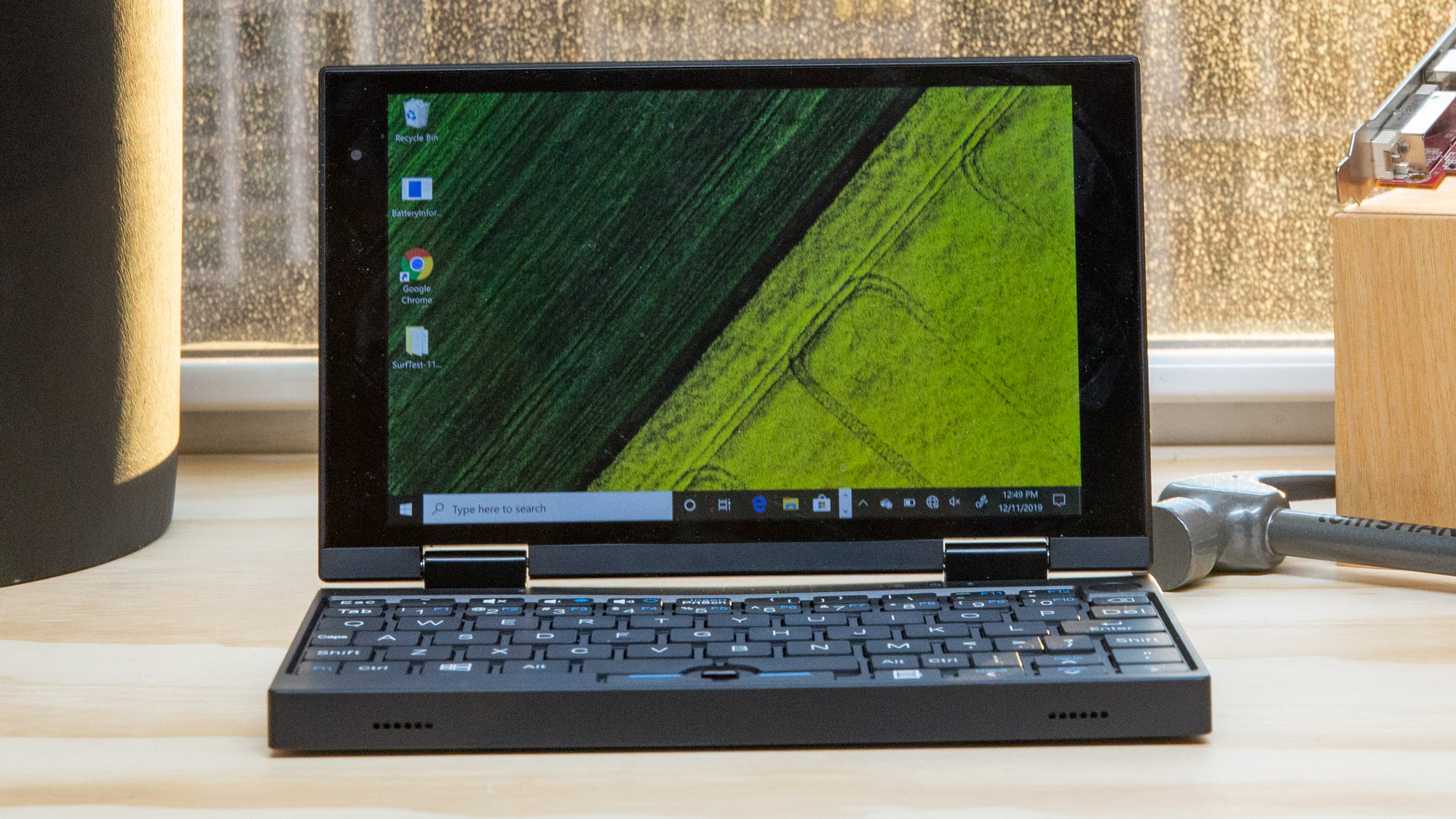
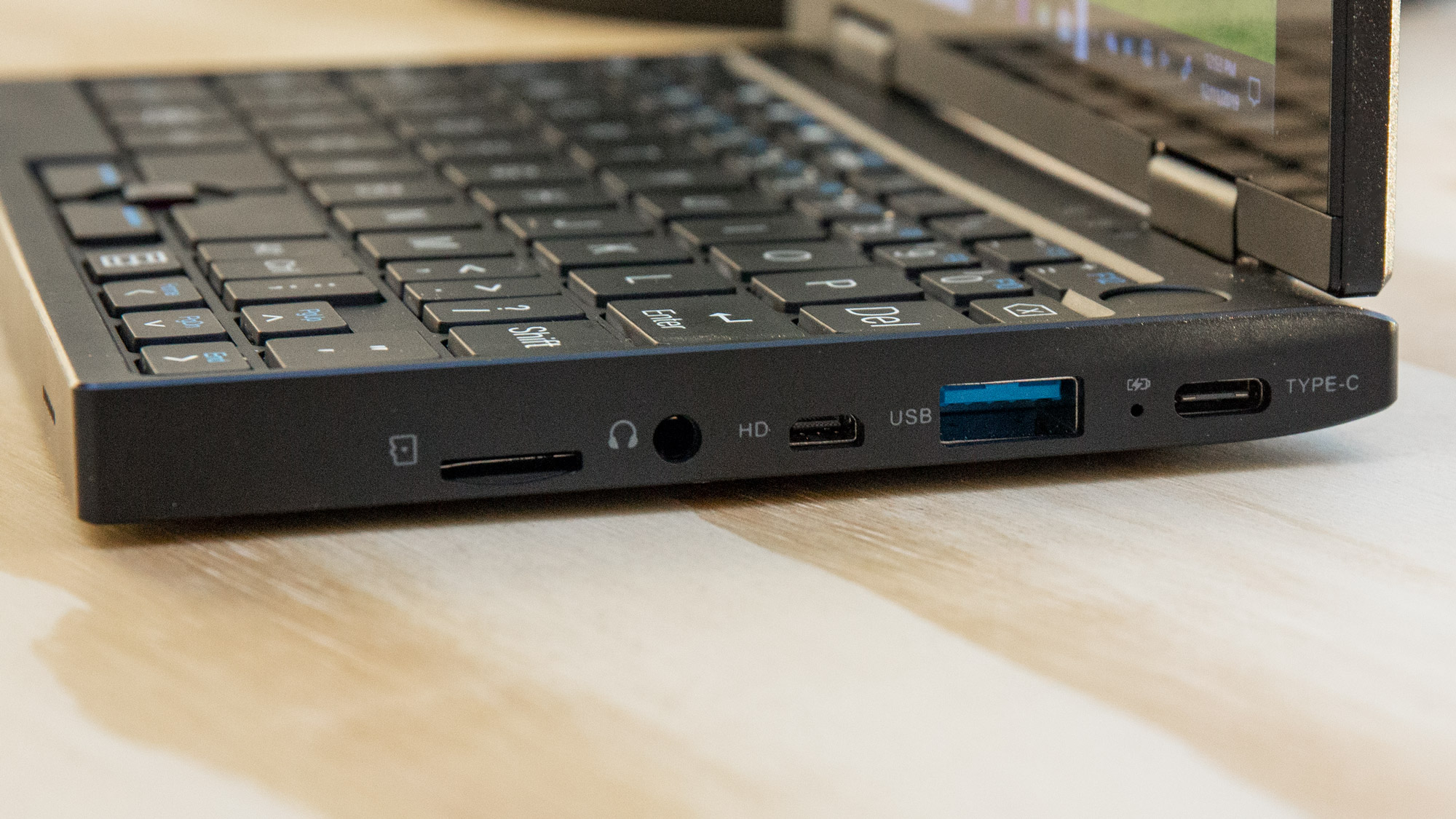
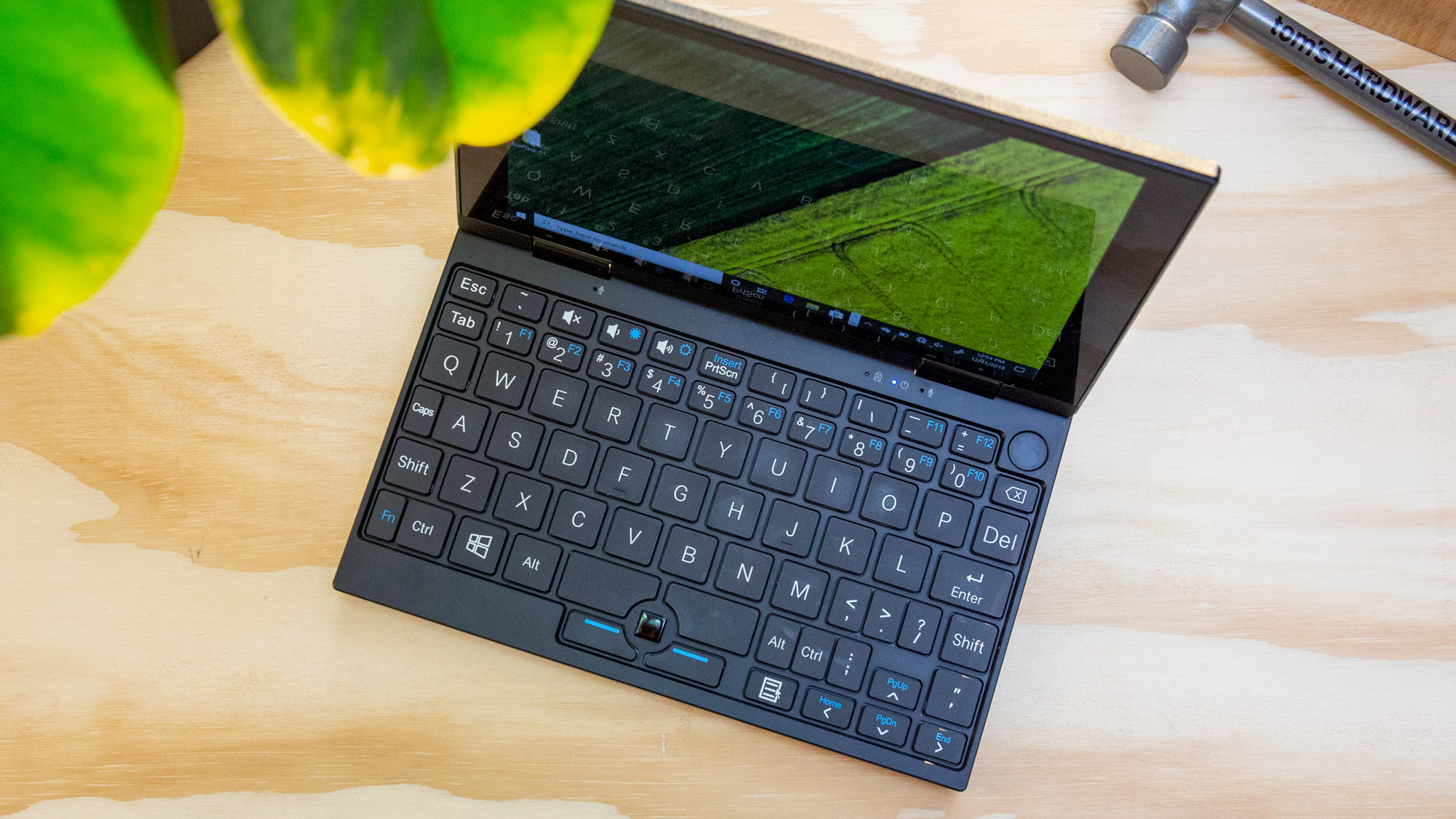
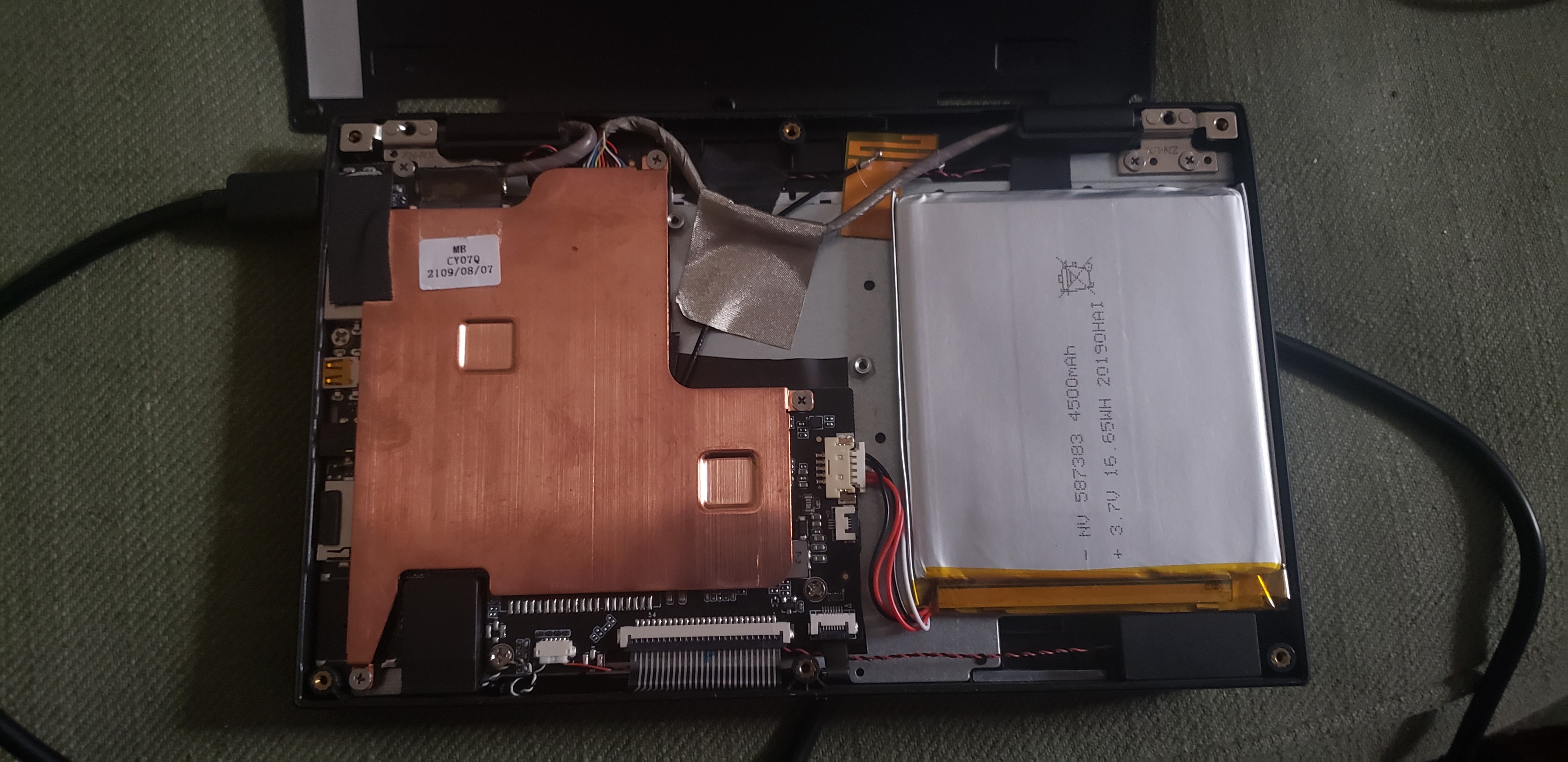
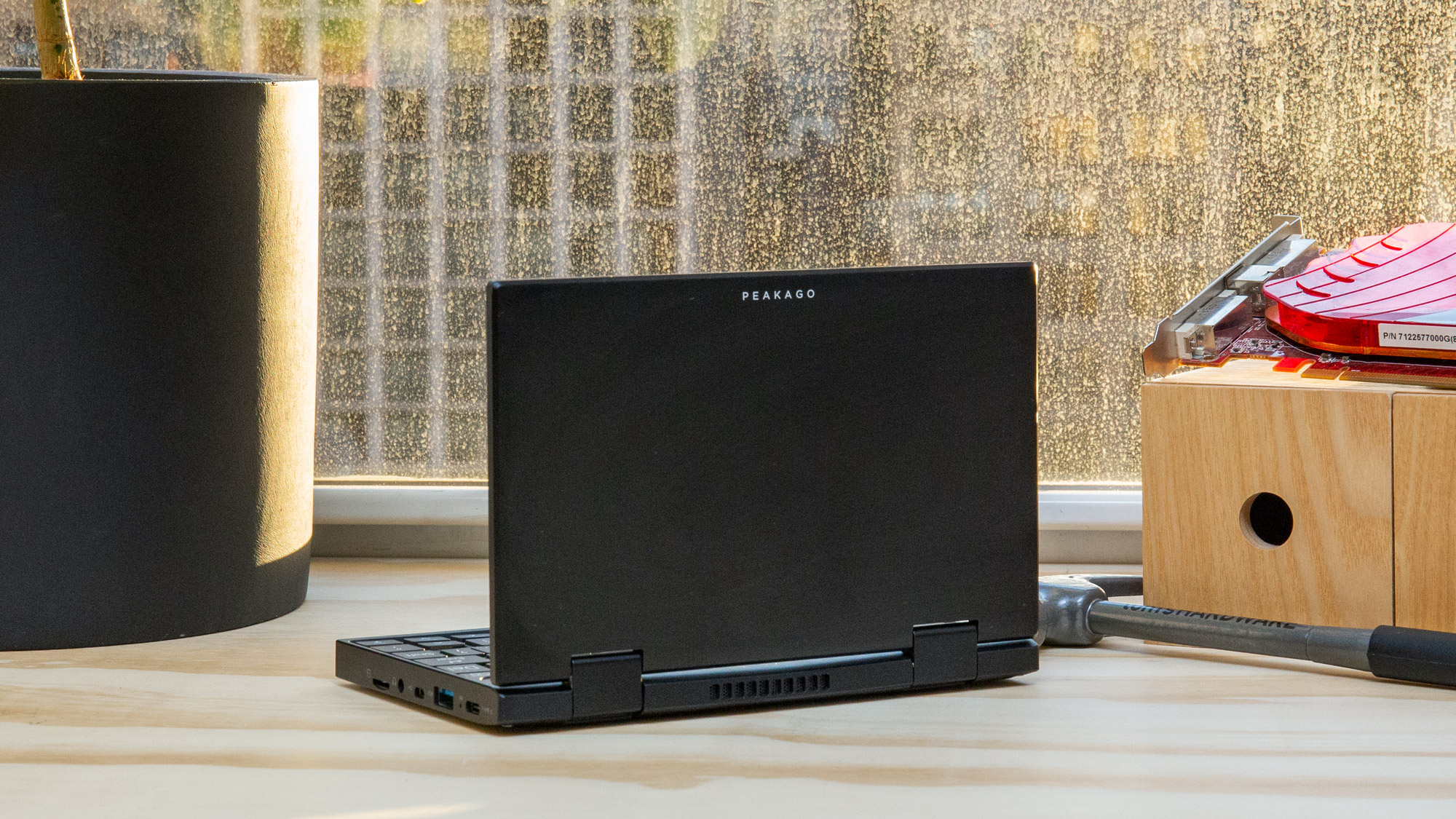
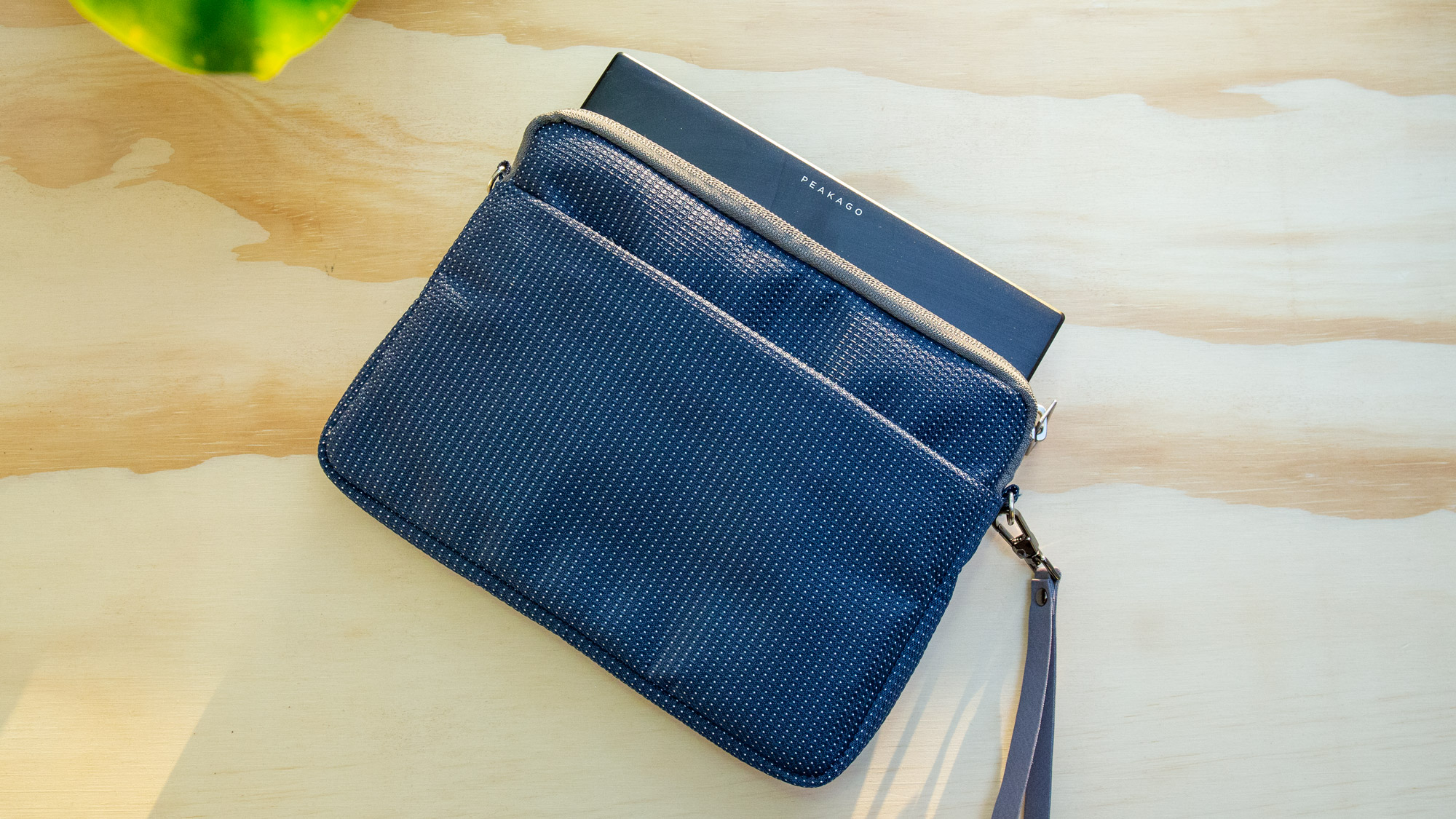
Specifications
| CPU | Intel Atom x5-Z8350 |
|---|---|
| GPU | Intel HD Graphics |
| Display | 7-inch IPS (1920 x 1200) |
| Memory | 8GB |
| SSD | 128GB eMMC |
| Networking | Wi-Fi 802.11 b/g/n, Bluetooth 4.0 |
| Video Ports | Micro-HDMI |
| USB Ports | 1x USB 3.0 Type-A, 1x USB-C |
| Camera | 0.3 MP |
| Battery | 65 Whr |
| Power Adapter | USB-C to USB-A charging cable |
| Operating System | Windows 10 Home S Mode |
| Dimensions (WxDxH) | 7.1 4.5x 4.5 x 0.7 inches (180.3 x 114.3 x 17.8mm) |
| Weight | 1.2 pounds (544.3g) |
| Price (as configured) | $399.99 |
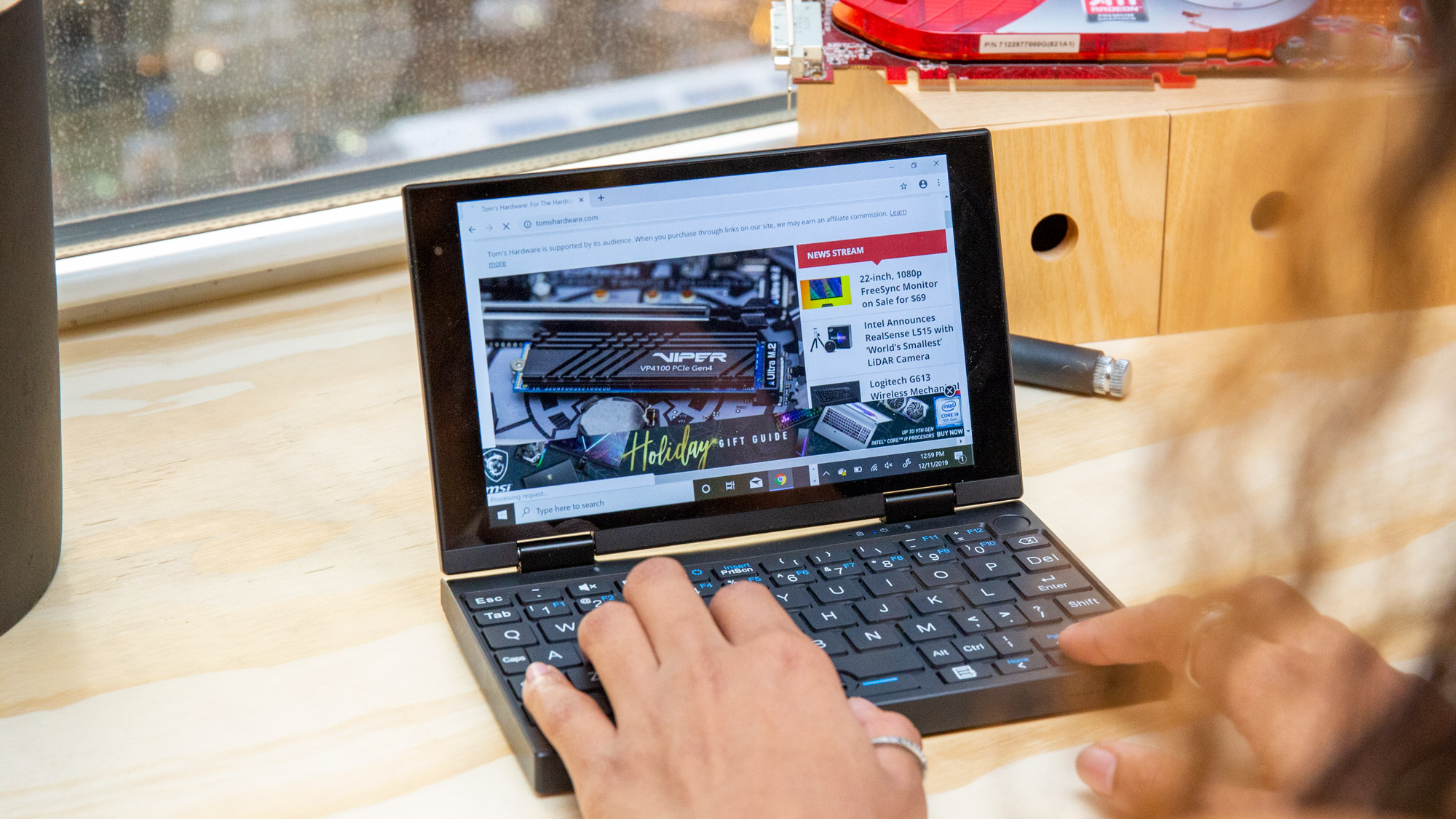
The Peakago is a fairly nondescript black box, measuring a scant 7.1 x 4.5 x 0.7 inches and weighing 1.1 pounds. The logo appears in simple white letters on the top of the aluminum lid, and the chassis has a matte black finish that attracts fingerprints. The rear of the unit features a single exhaust vent to dissipate heat, as well as the I/O ports (USB 3.0 Type A, USB Type-C, a microSD card slot, Micro-HDMI and a 3.5mm headphone jack) are located on the right side.
As a convertible 2-in-1, the 1920 x 1200 resolution IPS display can flipped so the laptop can function as a tablet. In my use, the hinge felt remarkably solid with barely any flex or wobble.
You can hook the Peakago up to full-size PC monitor via a Micro-HDMI to HDMI cable, but good luck finding one of those at your local electronics store. Peakago offers a cable for $12 but doesn't include one in the box. Further, the use of Micro-HDMI is somewhat puzzling given the presence of a full-size USB 3 Type-A port, making me wish for a more common video output port. In order to effectively use the Peakago as a more conventional PC with a large display, you will need a dongle because as the USB-C port will be occupied by the charging cable, leaving you with a single Type-A port.
On Geekbench 4.3, the Peakago scored 2,239 in multi-core tests and 843 in single core tests. Geekbench 5.0 returned results of 513 in multi-core and 169 in single core, respectively.
Recently, the company announced that new Peakago units will come equipped with a Broadcom Dual Band AC WiFi Module that will hopefully improve performance.
Get Tom's Hardware's best news and in-depth reviews, straight to your inbox.
The Peakago features a 7-inch, IPS display at 1920 x 1200 resolution. It covers 94.8% of the sRGB color gamut and has an average brightness of 188.8 nits, according to our testing. While the display did appear sharp and colors popped during my usage, the screen didn't look great outdoors, which is a problem for something this portable. On the other hand, touchscreen functionality is quick and responsive, and the panel is quite impressive for its size, delivering rich color and very high pixel density (323.45 pixels per inch).
The Peakago’s keyboard is serviceable, but its tight quarters do not make for a comfortable typing experience. Key travel and throw distance felt fine, but any action requiring use of the FN key was cumbersome, due to the extremely small key nestled right next to the Alt key.
In place of a trackpad, the Peakago utilizes a mouse nub similar to the TrackPoint on Lenovo’s ThinkPads. Tracking is solid, but any action that requires holding down a mouse button while navigating was not only difficult but borderline painful. There simply isn’t enough room available to effectively drag and drop or even pull down a scroll bar with this interface.
The Peakago has speakers, but that’s the only positive thing to say about its sound. I put on Camp Lo’s “Luchini” to get a feel for the Peakago’s audio output and was met with low volume and tinny sound. While I did not notice any distortion, I was disappointed in the lack of punch; there was no bass to speak of, just a trebly whine. Audio quality was comparable to the built-in speakers on my Samsung Galaxy S9+ smartphone. Thankfully, there is a 3.5mm headphone jack available for those who want a better listening experience.
Configurations
The Peakago comes in three configurations: the Peakago, Peakago Pro with 4G and Peakago Pro without 4G. The Peakago Pro is specced the same as our review unit. The base model Peakago shares many of the same basic specs but cuts memory and storage in half and subtracts the built-in 4G networking. The Peakago, Peakago Pro (4G) and Peakago Pro (no 4G) are priced at $279, $399 and $279, respectively.
Bottom Line
The Peakago resides in a unique space in the market. There simply isn’t a 7-inch 2-in-1 laptop available at a sub-$400 price point. But it’s debatable as to whether or not this is a product that anyone legitimately needs. As a laptop, it is uncomfortable to use for long periods of time. There isn’t enough I/O to go around to use the Peakago effectively as a low-powered desktop without going to Dongle Town. The device feels better as a tablet, but there are cheaper Windows 10 tablets available with similar specs if you’re willing to abandon having a physical keyboard. The Peakago certainly is novel, but the novelty wears off quickly and what remains is a desire for a product that is truly exceptional.
MORE: Best Gaming Laptops
MORE: Gaming Laptop Reviews
MORE: All Laptop Content

Nate Rand is a freelance reviewer for Tom's Hardware US, covering gaming headsets, keyboards, mice, and microphones.
-
mikeebb Sounds like a smaller, very slightly more modern version of my old RCA 10" 2-in-1. At least mine came with normal-mode Win10 Home, not S. And it's a legitimate machine for cases where portability wins over all else. It's not a laptop or even close to a laptop replacement, and IMO 7" is just too small. I will grant that even Android doesn't power many tablets in that size range any more.Reply
Info not in the review that has been a problem with mine:
battery life? (Mine is 3-4 hours depending on how much CPU gets used and how much networking.) Apple, the few Android still around, and the 10" Surface do much better.
support? ("RCA" is somebody in China that provides no real support and this one doesn't sound any better.) Drivers for mine are what was released with it for Win10 1511, and updates from MS have not always worked right.
screen usability? I doesn't have to be 4K (mine is 800x1200) but does need to be sharp enough for regular use including watching the odd movie or other stream. I didn't see that discussed much in the article.
comms? How stable is that wifi adapter? In my RCA, if I end up in a place where I can't connect to wifi, the adapter has be be reset before it will connect again even at home. Also, how well does the 4G work (if you had the 4G version)?
resources? You noted in text that the base version had 1/2 the RAM and eMMC of the Pro, but the Pro (non-4G) is quoted at the same price as the base. Other than lack of 4G, what's the difference between the mid-grade Pro and the base?
I would point out that if you can get it out of S mode it's possible to run some normal software. Mine runs Libreoffice and VLC OK (is there a headphone jack to get around those tinny speakers?), and SumatraPDF is a good lightweight PDF/EPUB reader. I still have a problem with the 7" screen size, though - that's definitely tablet-only size. And a tablet with a bluetooth keyboard would probably work as well or better than something with a flaky USB plugin keyboard like mine and probably this one.
Anyway, thanks for bottom-fishing the Windows market. -
kiara_ab This was a scam :( I backep up the project on indiegogo but they stopped sending updates since march. At first everyone thought it would pass after the corona situation in China, but they simply are not replying to questions from backers anymore.Reply -
bhwong Replykiara_ab said:This was a scam :( I backep up the project on indiegogo but they stopped sending updates since march. At first everyone thought it would pass after the corona situation in China, but they simply are not replying to questions from backers anymore.
I hope Nate Rand will help us by revealing the owner for us to get back our refund. -
BrokerRobin Does anyone have any update or any contact for Peakago?? I paid over $500+ back in 2019 with an expected delivery date of March, 2020, but of course that date has come and gone, and the manufacturer won't reply: https://screenshots.robincheung.ca/KoudPok6Reply
